I had the great pleasure to volunteer with a non-profit in California installing solar panels on qualified low-income households. The homeowners would pay nothing at all or a small portion of the system cost, and all labor was donated. Solar panel manufacturers, like Siliken, Sunpower, and Canadian, and inverter manufacturers, like PV Powered, also offered subsidized or discounted pricing. The rest of the cost of the panels was funded by the Single Homes Affordable Solar Homes (SASH) Program run by California’s Solar Initiative. It was one of the best experiences of my life for quite a few reasons:
1. I’ve never thought I gave enough back to our community.
Other than a few “Walks for Hunger”, donations to many different organizations, several bags of clothes to Goodwill, and the occasional soup kitchen, I’ve never felt right about how much I give to others. I never felt better in my life than the 19 installations I worked on. I had a chance to meet the families from many of the homes we installed solar on, and they were beyond thankful. Even though they had many mouths to feed in their home already and things were probably tight, most cooked us lunch and offered us cold drinks. You can’t pay for the appreciation and satisfaction I felt.
2. People say solar energy systems are only for the affluent.
Many of the homes we worked on were built from Habitat for Humanity or other similar organizations. People who thought they would never own a house, are now able to. But how do they afford the ongoing expenses, like utilities? The SASH program is important because it allows solar incentives to go those that are in financial need. It also decreases a homeowner’s monthly electricity bill so they can use that money for other things.
I’ve heard from people who are upset about the solar incentives being offered right now in Massachusetts, Connecticut, and Rhode Island. They think that federal and state subsidies should go to families in need. Those families in need probably wouldn’t be able to afford a solar electric system if they can hardly afford to pay their mortgage or put food on the table. California has been able to step up and solve this problem. I hope similar programs are enacted in New England.
3. I was able to educate others about solar and teach them them about the installation process
I think there is both a lack of awareness and understanding about the solar industry. People have considered it too new of a technology, but developments in solar power started 150 years ago. As a team leader with the volunteer group, I would teach others how to design the system, prevent leaks from roof penetrations, and install the inverter. This would, in turn, help build and expand the skilled renewable energy workforce. The organization was training people in skills they never had at no cost.
4. The view wasn’t bad either
I’ve lived in New England most of my adult life. I really can’t complain about all the rich experiences that it has to offer, but California is another world. I’m glad I had the opportunity to experience it from the roofs of almost 20 houses. Every installation was different, from the streets of Southeast LA to the vineyards in the Central Valley to ocean views in San Diego. It was an el nino season so the farms close to the Bay area were a lush green. It was visually breathtaking. There’s nothing better than being on the roof installing solar panels in a world as beautiful as ours.
7M48DCHQNF4A



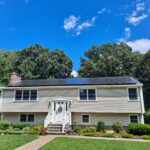
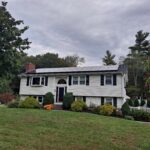
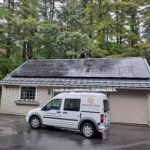
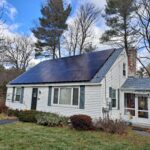
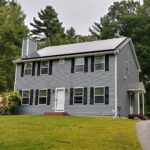
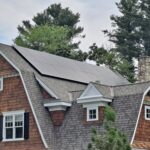
Pingback: Tweets that mention Solar Installations are Good for the Soul — BRIGHTSTAR SOLAR -- Topsy.com
I am a Disabled veteran looking for solar power. I have found it to be a very expensive project. I would like to have solar power but I know I could never have the funding to do it. I understand your company has in the past installed systems for individuals in need. I am asking for that same help.
Thank you,
Jeff Hopton
Thanks for sharing. I read many of your blog posts, cool, your blog is very good.
I don’t think the title of your article matches the content lol. Just kidding, mainly because I had some doubts after reading the article.
Your point of view caught my eye and was very interesting. Thanks. I have a question for you.
Your article helped me a lot, is there any more related content? Thanks!
Thank you for your sharing. I am worried that I lack creative ideas. It is your article that makes me full of hope. Thank you. But, I have a question, can you help me?
Can you be more specific about the content of your article? After reading it, I still have some doubts. Hope you can help me.
It must be recognized that “AAS users” symbolize a various group of people, including leisure athletes, non-bodybuilders
aiming to improve aesthetics, prisoners, navy personnel, and regulation enforcement officers [175–177].
Thus, it’s not clear if mortality outcomes from research
examining these heterogeneous populations are generalizable to the bodybuilding inhabitants.
Some case reviews have suggested that whey protein supplementation was a causative
factor for coronary events [107, 108], although the causative nature
of these claims is difficult to substantiate.
A case collection of 5 non-AAS using otherwise healthy males describes new onset of acne following ~ 6 months of normal whey protein consumption [109], and another case sequence reviews similar effects in five adolescent patients [110].
Preserving muscle tissue is a crucial advantage of
Primobolan, because it stops you from changing into catabolic whereas your
chopping food regimen is a calorie deficiency. Primobolan increases power, restoration, and muscle endurance so that it’ll contribute positively
to your exercises. Halotestin is best used as a strength-enhancing steroid, and this will present a massive benefit in a bulking
cycle even if Halotestin itself doesn’t contribute a lot or at all to
lean muscle development. The elevated power and aggression it causes can lead
to positive outcomes within the fitness center if you perceive how to buy anabolic steroids safely to
channel and control the aggression in your exercises.
This attachment – esterification of the 17β-hydroxyl
group – greatly retards the discharge of the compound from the oil depot
by growing its partition coefficient, i.e., making it more lipophilic and less hydrophilic.
As Quickly As the esterified steroid molecule reaches the
systemic circulation, both by way of direct diffusion or lymphatic drainage of the interstitial fluid, esterases cleave
off the ester group, releasing the father or mother compound (7).
So not only do you have more muscle, you need less relaxation between exercises – fairly helpful if you’re an athlete.
While they sound like a muscle-building miracle, anabolic steroids can have long-lasting results
on the our bodies of those who misuse them.
Each 10 mmHg reduction in systolic blood pressure reduces
the danger of main cardiovascular events, coronary heart illness, stroke, coronary heart failure, and all-cause
mortality by 20%, 17%, 27%, 28%, and 13%, respectively (95).
A persistent pharmacological increase in blood pressure – corresponding to brought on by
AAS use – can be imagined to have the inverse impact.
Male-pattern hair loss, or androgenetic alopecia, is an androgenic situation par excellence.
In the Forties, James Hamilton described how
male-pattern baldness didn’t develop in castrated
men unless they were administered testosterone (72).
Equally, it was later described that males born with 5α-reductase (the enzyme answerable for conversion of testosterone into DHT) deficiency by no means
developed male-pattern hair loss both (73). Pharmaceutical therapy of male-pattern hair
loss exploits this remark by way of inhibition of 5α-reductase kind 2
with finasteride (74). Some athletes could appear to get an edge from performance-enhancing medication.
Choosing natural and proven methods is the easiest way to construct muscle.
For a greater physique, dietary supplements and the best workout routines are highly recommended.
Getting this mental boost helps with focus and motivation, making tough training simpler to handle.
Dianabol requires you to eat sufficient meals calories for it to work to its
most stage. Dianabol comes in oral and injectable types, but oral is the most commonly used.
The slight chemical modification of testosterone gives Dianabol much less
androgenic results than common testosterone.
In January 2005, the Anabolic Steroid Management Act was amended alongside the Controlled Substance Act, adding anabolic steroids to the list of managed substances and making
their possession a federal crime. It exhibits why care is required when thinking about
using steroids for enhancing appears or sports performance.
Jaundice turns the pores and skin and eyes yellow and means there could also be liver harm.
These medication can also cause harmful liver cysts, needing medical care.
The doubtlessly harmful, sometimes even hidden, components
in some bodybuilding products are regarding.
Anadrol is designed to stimulate appetite, enabling customers to achieve weight rapidly.
Nevertheless, if doses are too excessive or the person doesn’t reply properly, we find it generally decreases appetite.
Our patients have found that consuming a lot of water and maintaining a clean diet successfully prevents water retention. When an individual drinks extra water, it causes
the physique to flush out present water in the body as a self-defense mechanism.
An effective dose for women seeking to build muscle is 12.5–25 mg per day for 4-6 weeks.
Due to Anadrol’s brief esters, its results can be skilled within the early stages of a
cycle.
If pharmacological intervention is indicated, statins are
the first-line of therapy to decrease LDL-cholesterol.
Statins would possibly cause muscle ache in a small percentage of customers (152),
however this facet effect might happen more frequently
in those that engage in common intense exercise
(153). For this group of sufferers, an skilled panel recommends the use
of hydrophilic statins (rosuvastatin and pravastatin) at a low-to-moderate dose, as hydrophilic statins
are regarded as more hepatoselective (153). If the statin isn’t tolerated, it
is advisable to vary to a lipophilic statin (e.g. simvastatin or atorvastatin), cut back the dose,
or strive an alternate-day routine (154). If regardless of these attempts statin intolerance stays an issue, different pharmacological choices, such as ezetimibe or proprotein convertase subtilisin/kexin kind
9 (PCSK9) inhibitors, ought to be explored.
Thus AAS use ought to be strongly discouraged in those that develop polycythemia.
Alternatively, therapeutic phlebotomy may be thought-about for
people who, towards higher judgment, continue AAS use for extended durations of time.
AAS are in Schedule 4, which is split in 2 components; Part 1 accommodates a lot of the
benzodiazepines and Part 2 accommodates the AAS. Many investigators employed the
approach proposed by Hershberger et al. (1953), but some made their
very own modifications to it, and others nonetheless used the
seminal vesicles as a bioassay of androgenicity. Our collective journey in the realm of health and health began years ago, driven by a shared passion for the transformative
power of exercise and diet. Santhan, identified to many as Linda,
combines her personal coaching experience with
distinctive motivational teaching expertise.
Her articles are not just informative but additionally incredibly inspiring, encouraging readers to take action and pursue their health targets.
Linda’s distinctive strategy to writing integrates sensible health steerage with motivational elements, making her content material
both helpful and uplifting.